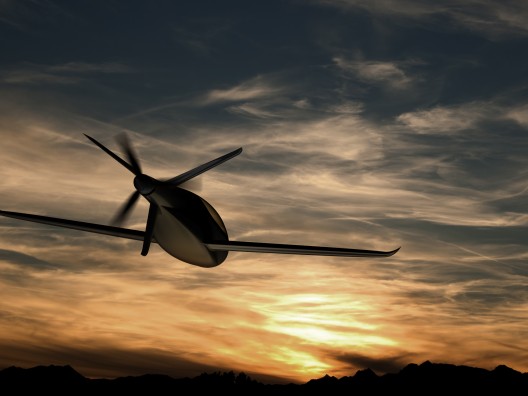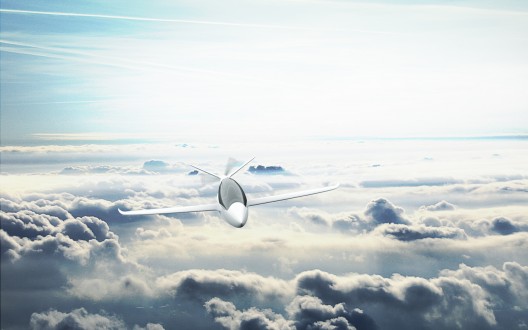Dan Johnson, reporting on his web site, said that on seeing this lovely display item at the E-Flight Expo at Aero 2015, he “was tempted to pass by as merely a concept that might go nowhere.” His talk with the designer, airline pilot David De Ridder, convinced him that this project has funding and substance behind it.
Don’t send a deposit check just yet. De Ridder told Johnson that the development of the aircraft should be finished by 2017 and kits should be available by 2019. In the meantime, the project’s web site provides a tantalizing vision of what could be in electric light sport aircraft.
Although the site is an alluring demonstration of computer graphics and slick word play, the numbers in the specifications section (subject to change without notice), are something that might be accountable, and don’t seem unduly optimistic, given current technology. A maximum cruising speed of 173 knots (199 mph) and economical cruising speed of 130 knots (149.5) don’t seem unrealistic given the sleek lines of the Ypselon. Its wing doesn’t seem too diminutive to support a stall speed of 50 knots (57.5 mph) although its span may be marginal with the peak power (90 kilowatts or 130 horsepower) to achieve the promised 1,500 feet-per-minute rate of climb – especially fully loaded. Despite the video, all this is probably predicted by computer drawings and calculations at this point, with no physical wind tunnel involved.
The airplane seems designed to fit into current European standards for two-seat light aircraft, with a loaded weight of 1,210 pounds (550 kilograms) and a payload of 484 pounds, more than enough for two average-sized Europeans and their luggage, but not for batteries, so those must be included in the airplane’s empty weight, or however the rules will shake out for future electric LSAs. That would leave the empty weight at 726 pounds, possibly enough, with modern construction, to allow batteries for the promised 500 kilometer (310 mile) range. That would require a little over two hours endurance at its economical cruising speed, which, given the empty weight, may allow enough batteries to make that possible. In two to four years, the whole game may change significantly.

5 to 8 euro per hour operating costs would make the airplane an affordable platform on which to go sightseeing
Ypselon is what might be thought of as an aspirational airplane, much like a Lincoln Continental is an aspirational car for Ford Focus owners. When new pilots earn their certificate in an Alpha Electro or Airbus or PC-Aero trainer, they might desire something like Ypselon. The 100,000 euro ($109,000) price tag for the kit makes that a reasonable aspiration, a lateral move price-wise from the trainer market. With its beautiful lines and promise of fun flying, the airplane will attract attention and buyers.


Comments 2
Hmm… There’s a reason why GA airplanes don’t ship with 2-hour fuel tanks. People are absolutely guaranteed to run out of stored energy while trying to get to places “not that far away”. And running out of kWh in a machine with a 50-kt stall has the potential for real consequences.
Anyone who’s flown in fast/small jets knows there’s a strange tension in pushing forward the throttle at takeoff, knowing that the clock starts right then, and doesn’t have far to run.
Pilot training will have to emphasize range awareness, big time.
I’m concerned about visibility from within this. When viewed head-on, there’s only a small annulus of canopy showing, the rest blocked by the nose. And the occupants’ eyes will be placed some distance from the inside of the canopy. So they’ll have a great view up, a fair view to the side – and almost no view forward. Having been unpleasantly surprised in flight by this in an experimental aircraft a few decades back, I’d hate to see it happen again.
Sure looks great from the outside, though! But it does explain why most bubble canopies aren’t so low profile…